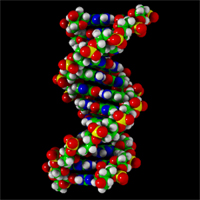Project Tearaway
| Project: Tearaway | |
|---|---|

| |
| First Seen: | Marauders (old) |
Project Tearaway was a semi-secret government program initiated by the United States Army Medical Research Institute of Infectious Diseases (USAMRIID) in the late-1990s. Its initial program was to categorize specific definitions of groups of mutation types, and to develop methods to transfer specific abilities into other applications. Particular attention was paid to mutant DNA that was shown to manifest healing factors, and to see if by twinning that DNA into boosters or skin grafts, whether it could be used to significantly improve existing medical therapies.
Unknown to Congress and their oversight committees, USAMRIID had taken a second and more radical step. By internally classifying mutants and mutant-related research under the broad heading of biowarfare, the Army branch began experiments into this newly assumed area. Tearaway was the first effort to graft mutant abilities into non-mutant subjects; a variant on the Project SuperSoldier program which had been resurrected on and off over the decades by various agencies with little to no success.
Tearaway was headed by Nathaniel Essex, who successfully created a method that would graft mutant DNA into a regular person, and allow for the transfer of mutant powers. However, the project had many limitations. The individual genetic print needed to qualify to be receptive to the process was fairly limited, meaning only one individual out of a hundred thousand would match. The process had a high mortality rate among the volunteers. As well, specific powers rarely transferred, meaning that most subjects would go on to manifest completely different powers from the genetic template that was imprinted on them.
After more than three years, the only success was a single team of operatives, dubbed the Marauders, to be of any use. When Congressional oversight committees began to ask questions, USAMRIID quietly shut the program down. Essex went on to continue to research elements of the process through a USAMRIID shell company called the Pygmalion Institute until 2003, when he left to join Xavier's School for Gifted Youngsters.
A version of the Tearaway process, far more advanced, was utilized years later by Essex to create the flawed clone of Kevin MacTaggart called Proteus. Rory Campbell, a former researcher at Muir Island stole an older version of the process prior to leaving and began to experiment with it himself, eventually creating a new application he dubbed The Hound Process. Ironically, it would be Essex himself who reversed the effects of this application when it was used on Marius Laverne, Jennie Stavros and Kyle Gibney.
A further version of the process was utilised in Genosha to create the Mutates, this time by none other than Essex himself. With the access to research and financial backing of the Genoshan Government, he was able to finalise his own project - the resurrection of his dead son.